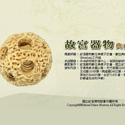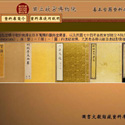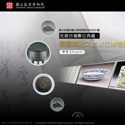-
傳統博物館提供文物展示的方式,常見以實品之展覽,輔以導覽和說明為主,已不能滿足現代人對美的追求及探索的熱切渴望,今日博物館面對比以往更多與社會多面向互動的壓力,取而代之的是運用數位科技應用的普遍性,開啟文物數位化展示的新途徑。文物數位化及數位典藏的工作成了世界各國博物館無法忽視的力量,它讓展覽透過豐富有趣的互動體驗、學習、研究及行銷宣傳,改變一般人對博物館及文物想像。
故宮博物院秉持著維護文物安全及兼顧數位化品質的執行策略,進行文物數位化的各項工作,不論在質、量上都有傲人的成果。自第二期計畫開始,故宮除了持續進行各項基礎數位化工作及後設資料建置外,也特別將重點放在資料庫的整合及使用介面的改良上,並將使用者這個因素放入。藉由以終端使用者的角度去尋求文物數位化的真實價值及目的,思考一般大眾如何在文物數位化的過程中得到最大的利益,以改善故宮數位典藏的建置工作,同時因應學術研究及教育推廣等不同需求,提昇數位典藏資源成果使用之便利性及親近性,讓民眾及學術研究、教育、藝術等不同領域人士皆能直覺而快速地享受到文物數位化便利、易取得、可修改的特性,構築一座學習無限、知識無邊的無牆博物館。
故宮陸續規劃在第二期計畫中將這些龐大的數位資料轉化為在學術、文化、商業等方面具有價值的資產,最終希望經由各項數位典藏成果之推廣應用及交流活動,促進各項學術及國際交流並成為國內相關文化產業發展知識經濟,創造文化產值之重要利基及參考。
-
Traditional museums generally display cultural artifacts by exhibiting the original artifact supplemented with guided explanations. This form of exhibits can no longer satisfy the urgent longing of modern visitors for beauty and deeper explorations. Museums today face ever more pressure for multi-faceted interactions with the society, and the ever increasing applications of digital technology has begun a new era to the display of artifacts. Digitalization of artifacts and digitalized archives are a trend that no world-class museum can ignore. Through fascinating and enjoyable interactive experiences, learning, study and promotions, digitalized exhibitions have revolutionized the way people perceived museums and artifacts.
The National Palace Museum has been carrying out digitalization of its archives, giving special consideration to safety of the artifacts and quality of the digitalization, and has now produced outstanding results in terms of both quality and quantity. Starting from Phase II of the e-Museum Project, the Museum has not only continued to carry out the various fundamental digitalization work and establishment of the metadata, it has also placed greater emphasis on the integration of the databases and improvement of the user interfaces, making "users" an important factor. By searching for the true value and purpose of digitalization of artifacts from the perspective of the end user, the Project considers how the general public will be able to derive the maximum benefit from the digitalization process, so as to improve the Digital Archives Project of the National Palace Museum. Digitalization must also take into account the different needs of academic research and promotion of education, enhancing the convenience and ease of utilizing digitalized archive resources, thereby enabling not only the general public but also those from different fields of expertise – including academic research, education and fine arts – to instinctively and quickly enjoy the special characteristics of convenience, accessibility and modifiability available to digitalized artifacts. The Project will build a wall-less museum that provides learning and knowledge without boundaries.
During Phase II of the Project, the National Palace Museum will continue to convert the enormous quantity of digitalized data into valuable assets in the academic, cultural and commercial arenas. Ultimately it is hoped that through promotion, application and exchange of various digital archives results, the National Palace Museum will help to promote international and scholarly exchanges, and become a model for development of relevant cultural industries, the knowledge economy and creation of cultural assets in Taiwan.





